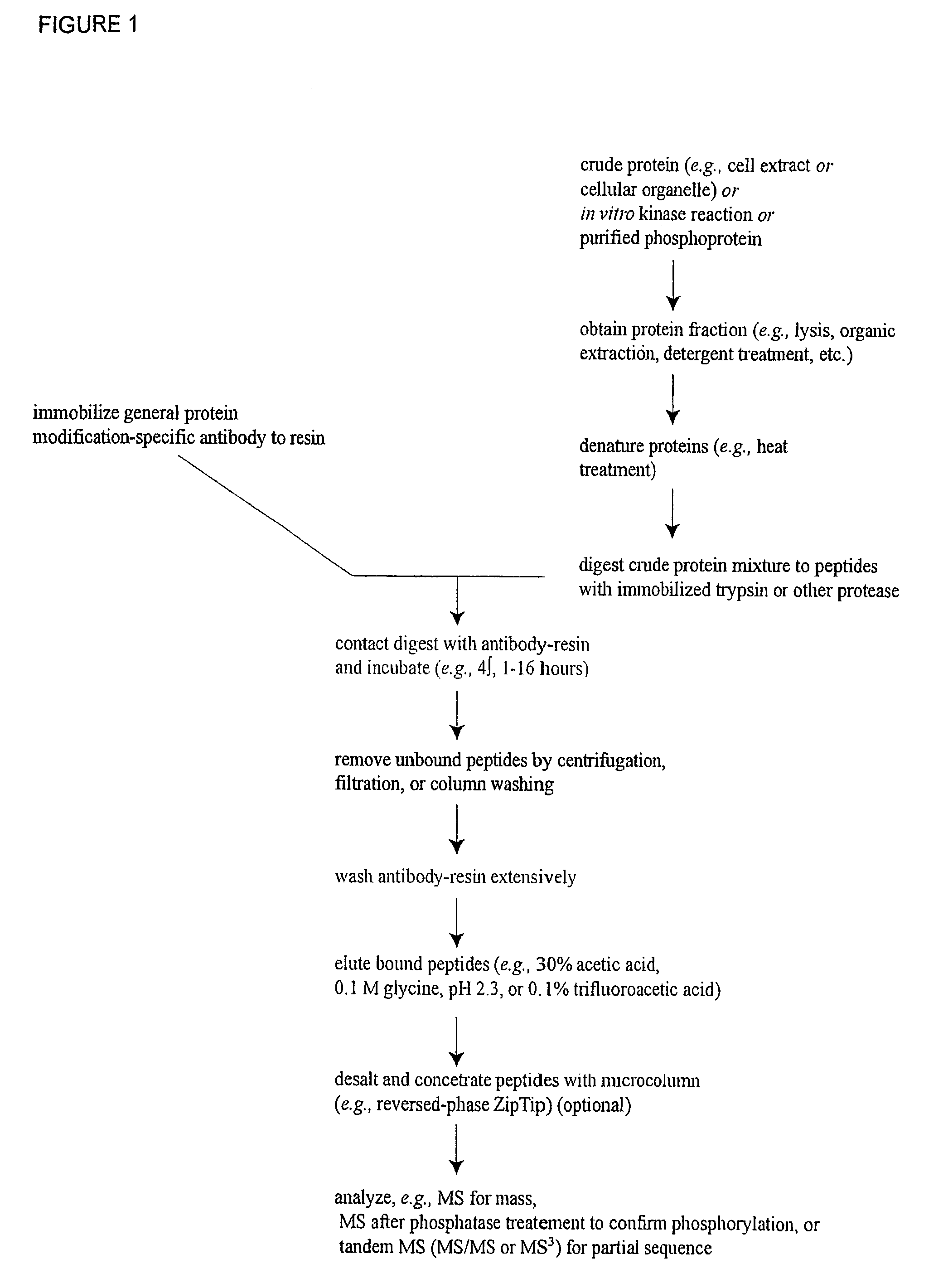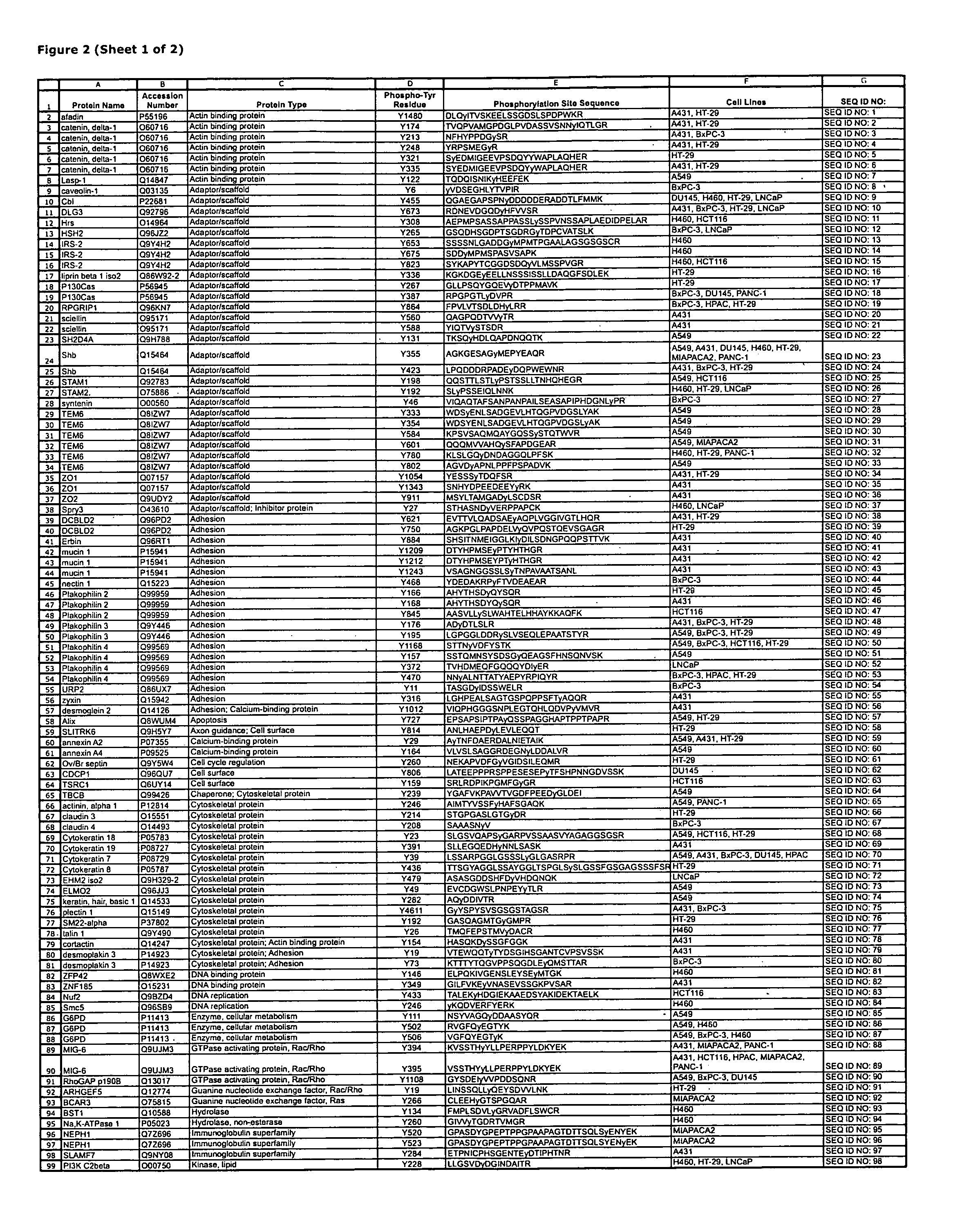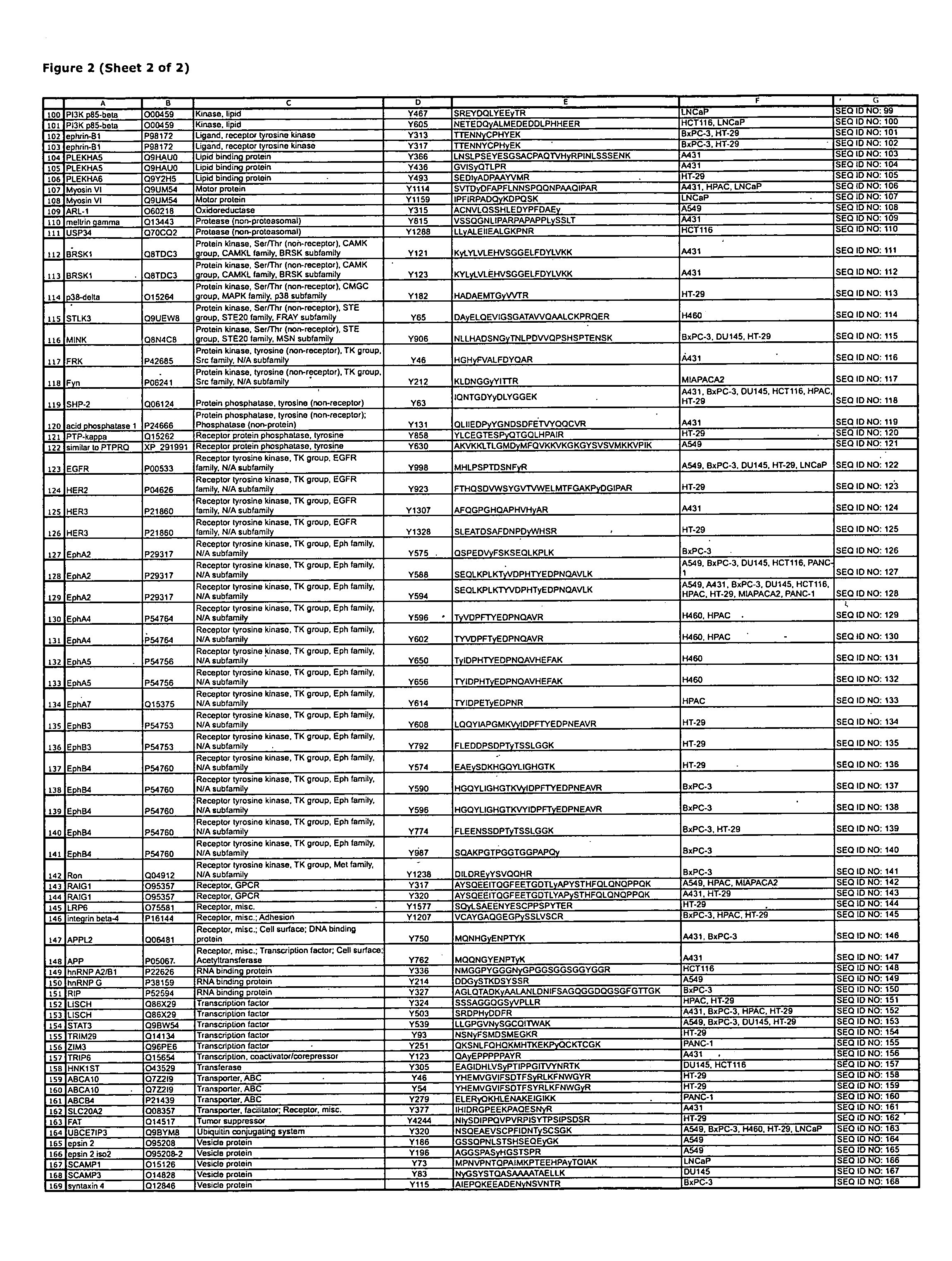Reagents for the detection of protein phosphorylation in EGFR-signaling pathways
a technology of signaling pathway and antibody, which is applied in the field of antibody and peptide reagents for the detection of protein phosphorylation, and to protein phosphorylation in cancer, can solve the problems of incomplete understanding of the molecular mechanisms contributing to egfr-mediated oncogenesis in a variety of human cancers, and is not yet well understood
- Summary
- Abstract
- Description
- Claims
- Application Information
AI Technical Summary
Benefits of technology
Problems solved by technology
Method used
Image
Examples
example 1
Isolation of Phosphotyrosine-Containing Peptides from Extracts of EGFR-Activated Tumor Cell Lines and Identification of Novel Phosphorylation Sites
[0139]In order to discover previously unknown EGFR-related signal transduction protein phosphorylation sites, IAP isolation techniques were employed to identify phosphotyrosine-containing peptides in cell extracts from the following human carcinoma tumor cell lines, each of which has activated EGFR kinase: A431, HCT116, HPAC, MIAPACA2, PANC-1, A549, BxPC-3, DU145, HT-29, H460, and LNCaP. Increased expression of EGFR has been demonstrated in a variety of human cancers, including breast, colon, pancreatic, ovarian, lung, esophogeal, and neural. See, e.g., Yeatman, supra. Thus, the cancer cell lines expressing elevated levels of EGFR and stimulated with EGF were chosen to mimic signaling pathway activity in cancers involving activated EGFR.
[0140]Tryptic phosphotyrosine peptides were purified and analyzed from extracts of the each of the elev...
example 2
Production of Phospho-specific Polyclonal Antibodies for the Detection of EGFR-Related Signaling Protein Phosphorylation
[0150]Polyclonal antibodies that specifically bind an EGFR-related signal transduction protein only when phosphorylated at the respective phosphorylation site disclosed herein (see Table 1) are produced according to standard methods by first constructing a synthetic peptide antigen comprising the phosphorylation site sequence and then immunizing an animal to raise antibodies against the antigen, as further described below. Production of exemplary polyclonal antibodies is provided below.
A. HER2 (tyrosine 923).
[0151]A 15 amino acid phospho-peptide antigen, MTFGAKPy*DGIPAR (where y*=phosphotyrosine) that corresponds to the sequence encompassing the tyrosine 923 phosphorylation site in human HER2 receptor kinase (see Row 124 of Table 1; SEQ ID NO: 123), plus cysteine on the C-terminal for coupling, is constructed according to standard synthesis techniques using, e.g., ...
example 3
Production of Phospho-Specific Monoclonal Antibodies for the Detection of EGFR-Related Signaling Protein Phosphorylation
[0158]Monoclonal antibodies that specifically bind a EGFR-related signal transduction protein only when phosphorylated at the respective phosphorylation site disclosed herein (see Table 1) are produced according to standard methods by first constructing a synthetic peptide antigen comprising the phosphorylation site sequence and then immunizing an animal to raise antibodies against the antigen, and harvesting spleen cells from such animals to produce fusion hybridomas, as further described below. Production of exemplary monoclonal antibodies is provided below.
A. EphB4 (Tyrosine 574).
[0159]A 13 amino acid phospho-peptide antigen, NGREAEy*SDKHGQ (where y*=phosphotyrosine) that corresponds to the sequence encompassing the tyrosine 574 phosphorylation site in human EphB4 kinase (see Row 137 of Table 1 (SEQ ID NO: 136)), plus cysteine on the C-terminal for coupling, is ...
PUM
| Property | Measurement | Unit |
|---|---|---|
| concentration | aaaaa | aaaaa |
| pH | aaaaa | aaaaa |
| pH | aaaaa | aaaaa |
Abstract
Description
Claims
Application Information
 Login to View More
Login to View More - R&D
- Intellectual Property
- Life Sciences
- Materials
- Tech Scout
- Unparalleled Data Quality
- Higher Quality Content
- 60% Fewer Hallucinations
Browse by: Latest US Patents, China's latest patents, Technical Efficacy Thesaurus, Application Domain, Technology Topic, Popular Technical Reports.
© 2025 PatSnap. All rights reserved.Legal|Privacy policy|Modern Slavery Act Transparency Statement|Sitemap|About US| Contact US: help@patsnap.com



